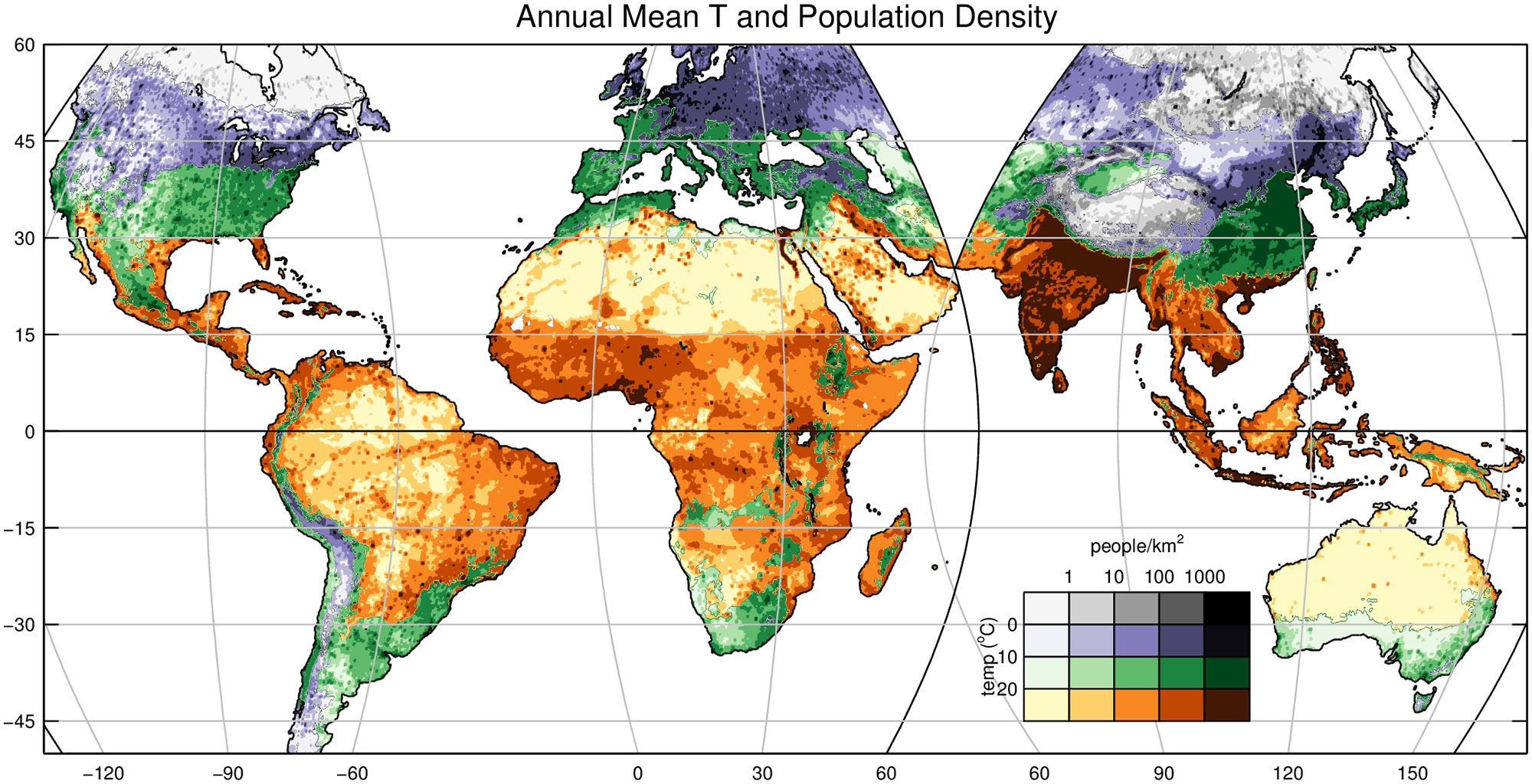
RYAN – Population distribution within the human climate niche
Barry Klinger, Sadie J Ryan
Article first published online: 9 November 2022
DOI: https://doi.org/10.1371/journal.pclm.0000086
ABSTRACT: Climate change may pose an acute threat to humanity due to physical and biological constraints on regional habitability. A recent study proposed that the human climate niche is a narrow segment of the Earth’s temperature range, with a mode of habitation around 13°C. Here, the human climate niche is recharacterized using a novel graphical technique, the size-intensity chart. Several measures of population distribution were compiled to test the idea that humans live preferentially in the temperate range (10–20°C) rather than the warm range (20–30°C). The temperate range has a higher average population density (people/km2), which suggests that it is more suitable for humans than the warm range. However, other population measures suggest the opposite. The warm range has a greater overall population; and regions with high population densities cover a greater land area and are home to more people in the warm range. Population density also depends on annual precipitation R; size intensity charts show that population density increases sharply with precipitation for 40 < R < 80 cm/yr. The warm temperature range has a greater surface area with desert conditions of R < 10 cm/yr, but sparse habitation in dry regions does not explain the lower average population density of the warm range. Overall, human habitation patterns do not show a consistent preference for temperate over warm lands, and that precipitation may mediate, but not limit this relationship.
Read the full publication at PLOS Climate.